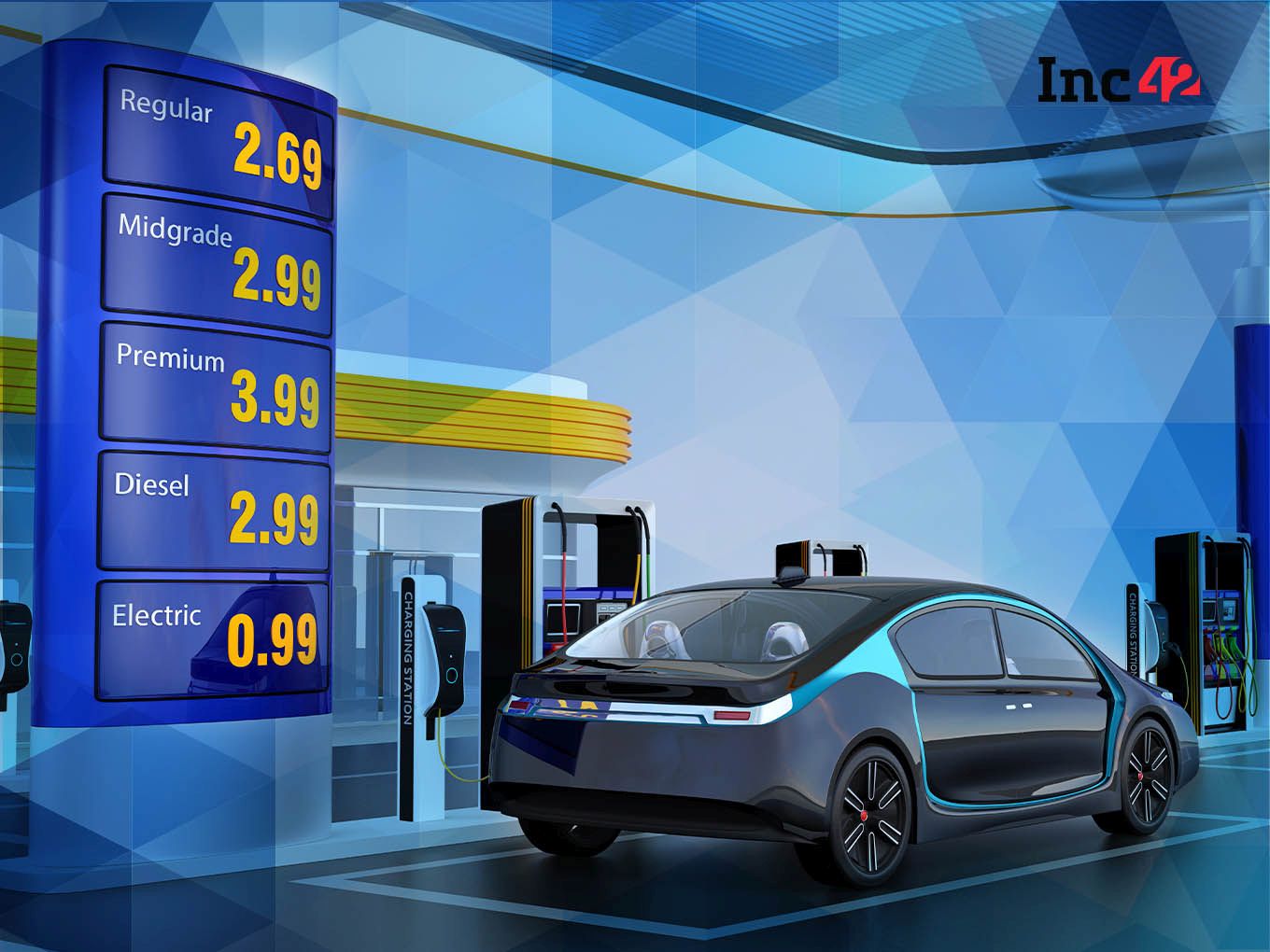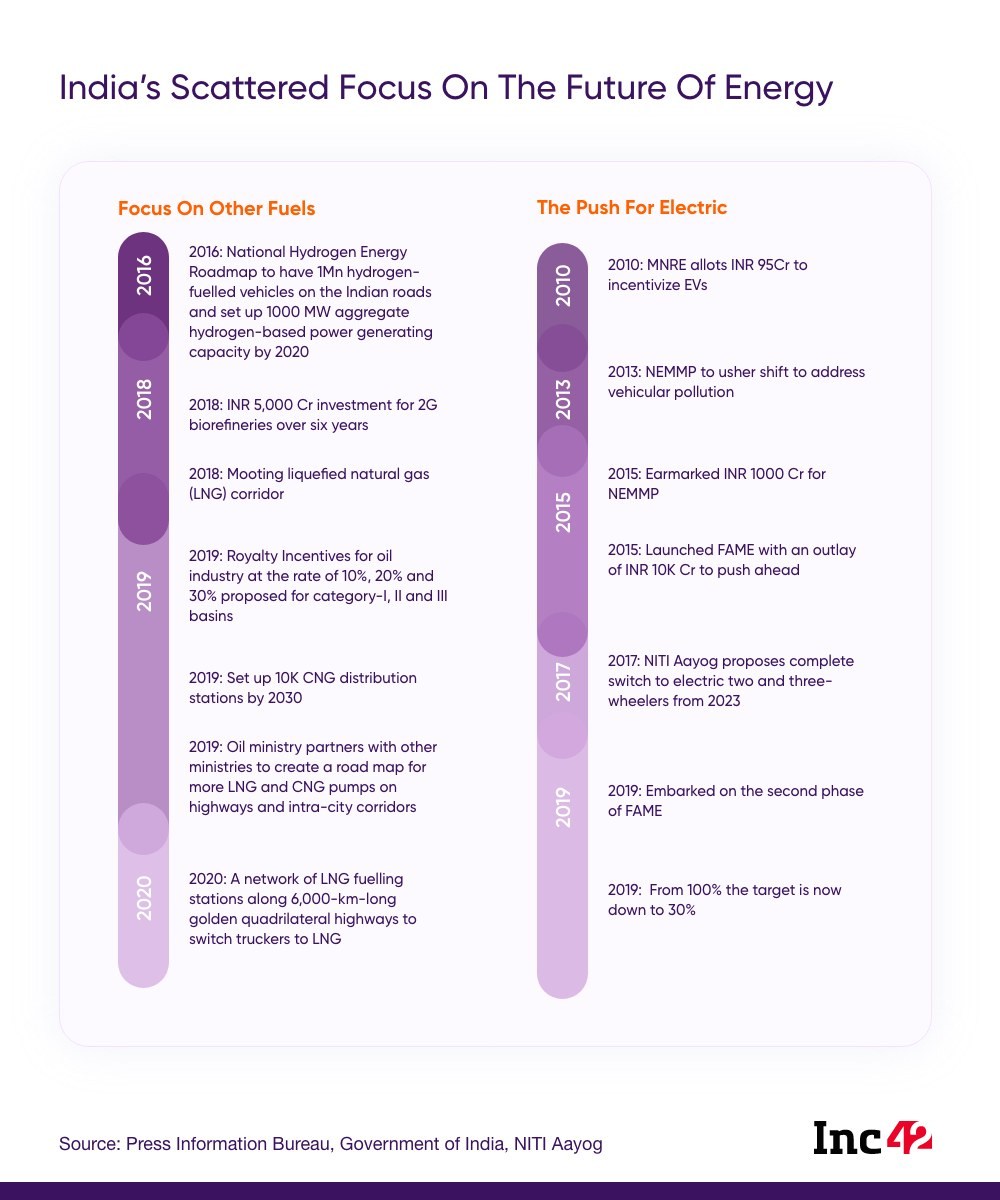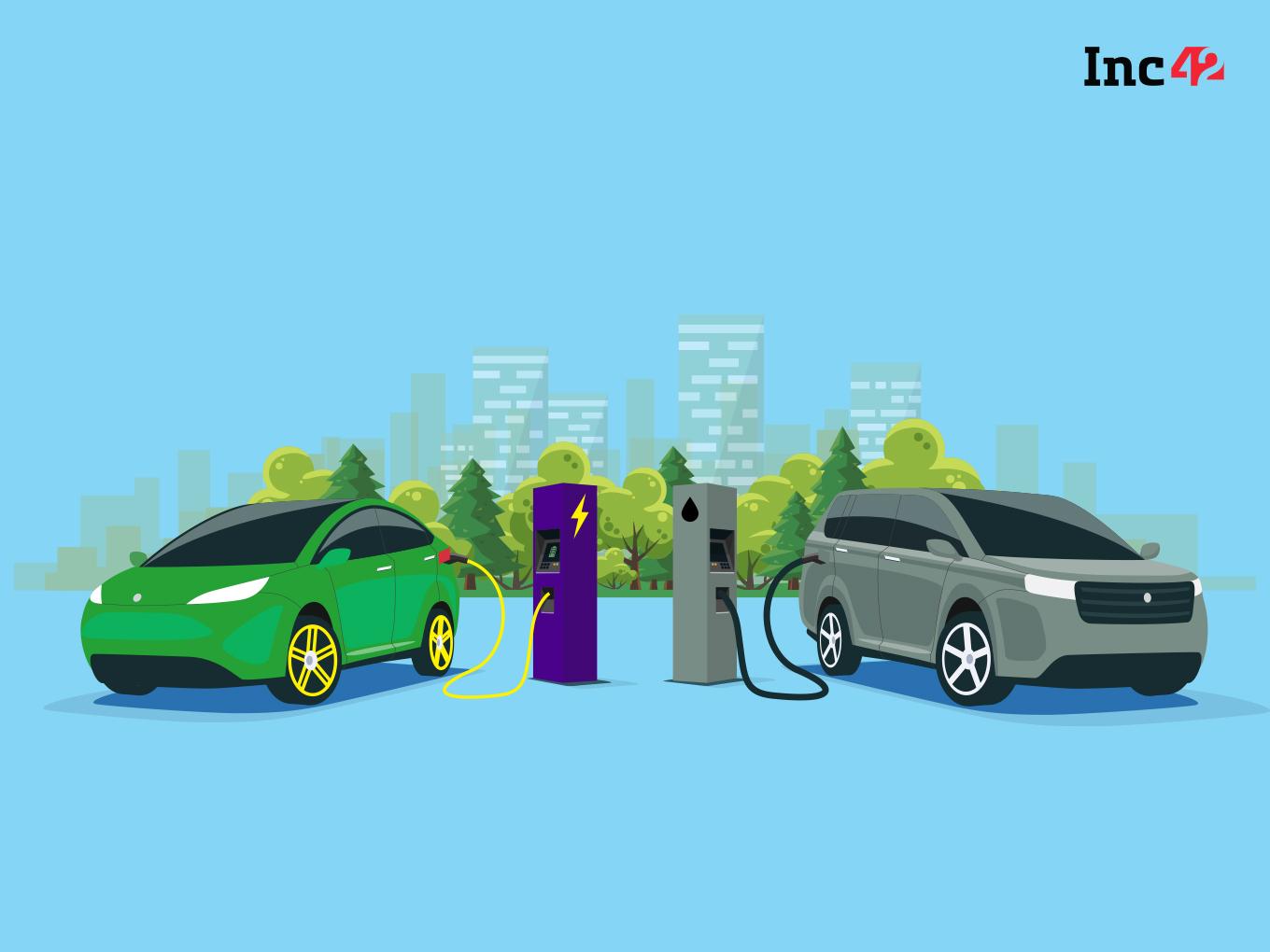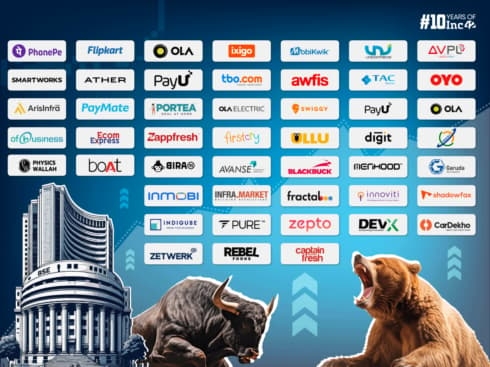Oil companies that have invested more than INR 30,000 Cr for BS-VI norms are worried about the EV push
The transition, if not monitored well, can lead to a loss of two-thirds of the tax revenue from petrol and diesel
The switch to green mobility is also expected to severely disrupt the automotive value and manufacturing chain
India's Electric Future
India is electrifying its vehicles, but is it enough to reach 30% penetration by 2030? Deep dive into what really needs to be done to help India become a 'true' EV nation.
The antarctic temperature has risen above 20 degrees Celsius, the polar ice caps are melting, wildfires happen unabashedly in Australia and California, South Asia is home to frequent earthquakes, cyclone season is devastating in North America, heatwaves claim thousands of lives in Europe and India each year, volcanoes are erupting and the earth’s axis is shifting.
Nature is losing its balance and there is a renewed call around the world for sustainable and clean energy resources. At the forefront of the many plans is the switch to electric vehicles (EV) given the higher CO2 emissions from petrol and diesel vehicles both in operation as well as in oil production.
But it’s not just about the over-reliance on fossil fuels. Air pollution kills around 7 Mn people worldwide every year and vehicles contribute greatly to this directly and indirectly. World Health Organisation data shows that 90% of the world’s population breathes air containing high levels of pollutants. At a global level, the cost associated with health damage from ambient air pollution is estimated to be $5.7 Tn equivalent to 4.8% of global GDP in 2016, says the World Bank. In individual countries, the economic burden of pollution associated with premature mortality and morbidity is also significant, equivalent to 5 to 14% of countries’ GDPs.
India has paid a heavy price for this over-reliance on oil and petrochemicals in the past few decades. And now electric vehicles with zero direct emissions are being seen as the end to most environmental woes. The Indian government is aiming for 30% penetration for EVs by 2030, which is an ambitious target by itself, made even steeper by resistance from the oil industry as well as infrastructural and market challenges.
India has over 51 EV startups and the capital inflow in electric vehicle startups has grown exponentially between 2014 and 2019. Taking the outlier funding rounds into consideration, according to Datalabs by Inc42’s Electric Vehicle Market Outlook 2020 Report, the total capital inflow in the electric vehicle sector was at $601 Mn whereas the capital inflow into electric vehicle startups peaked at $394 Mn in 2019 alone.
However, any disruptive transition has consequences. What kind of spill off will EVs have on other industries and investments in the oil and petrochemical industry?
For instance, according to our sources, electric vehicles could displace much as 6.4 Mn barrels of oil demand per day globally. What kind of impact can a successful EV transition have on India’s oil industry? What happens to the government’s plan to deploy INR 5,000 Cr for second-generation biorefineries over six years under the National Biofuels Policy 2018?
Crude Awakening
The adoption of EVs is also looked at as something absolutely pertinent to reduce the import bill. India spent around $125 Bn in 2018-19 on fuel bill import. With 85% of our crude oil coming in through imports, the government is looking inwards to meet energy demands through alternative sources and aims to reduce oil and gas import dependence by 10% by 2022. With NITI Aayog’s proposal to transition two and three-wheelers completely to electric by 2030, India is taking its first step towards the future of mobility.
What would be the impact on oil consumption from EVs?
In 2018-2019, India’s petroleum product consumption was 200 Mn tonnes. According to a joint study by NITI Aayog and Rocky Mountain Institute, USA, India can save 64% of the anticipated road-based mobility-related energy demand and 37% of carbon emissions in 2030 by opting for shared, electric, and connected mobility solutions.
“Electric vehicles are the future of transport. The cost of solar energy generation and battery storage have been on exponential curves for the past 4 decades. At this pace, within five years, solar energy will be cheaper than any fossil fuels and batteries will cost less than half of what they do today,” Vivek Wadhwa, entrepreneur and distinguished fellow, Harvard Law School, Labor and Worklife Program told Inc42.
The transition to emobility, however, is expected to have an impact on the national exchequer if the execution is not smooth, well-managed, governed and monitored properly with suitable planning and intervention. In the past, government policies have come and blindsided the industry while with EVs, the industry has a long-term view of the policy.

In terms of loss of revenue to the exchequer, petrol and diesel taxes contribute to 2.7% of India’s GDP. It is estimated that transition to electric vehicles will lead to two-thirds of this revenue getting lost, which in turn will have implications on budgetary allocations.
Even the government is wary of the revenue loss in the long-term. Minister of petroleum & natural gas and minister of steel Dharmendra Pradhan had said last year that EVs are a priority but the incremental requirement of fuel will have to be met through a combination of (ultra-clean) BS-VI grade petrol and diesel, CNG and biofuels alongside EVs. The Federation of Indian Petroleum Industry (FIPI), with representatives from Indian Oil Corporation, Reliance Industries, Nayara Energy, ONGC and others, have often shared concerns about investments already made by the oil refiners for BS VI stage and said that the government should promote hybrid technology (IC Engine plus battery) instead.
“The cost of building and operating EVs will be less than half of what it is today and the economics will completely change. Every major car manufacturer will discontinue the production of fossil fuel consuming vehicles,” added Wadhwa.
By 2025, the price of oil is expected to drop into the $20-$25 per litre range from the current $70-$80 per litre. “This means that the industry will face bankruptcies and disruption. Yes, it will be cheaper to drive petroleum consuming vehicles, but maintaining these will be so costly on a relative basis — and so destructive for the environment that governments will look at getting these off the roads. I expect that by 2030, all major cities will ban fossil fuel vehicles,” added Wadhwa.

Today, China leads the EV market with around 45% (2.3 Mn) of total electric cars on its roads in 2018, followed by Europe at 24% and the United States at 22%, says an IEA report. The Indian government too aims an EV sales penetration of 30% for private cars, 70% for commercial cars, 40% for buses, and 80% for two-three-wheelers by 2030 through its Faster Adoption and Manufacturing of (Hybrid) and Electric Vehicles (FAME) policy. Other than that around 11 states including Bihar, Kerala, Maharashtra and others have come up with individual policies as well.
With the transition to EVs becoming inevitable and necessary, the mindset of investments in oil and gas sector is also expected to change. Electric vehicles, batteries ad EV charging will become an alternate revenue source to these companies, experts reckon.
Big Oil companies like Shell, BP and others are now shifting gears towards EV charging as well so as to not lag behind the upstarts and startups in tapping this business opportunity. Shell Petroleum is reportedly looking at expanding into the EV charging solutions beyond gasoline and is looking for partnerships with carmakers. Indian Oil has commissioned 216 MW of renewable energy projects, which includes 167.6 MW of wind r and 48.6 MW of solar power through photovoltaic cells. It as also announced that they will soon be getting into energy storage batteries. Other behemoths, Reliance Industries (RIL) and BP also reportedly have plans to offer EV charging points at their energy stations across India.
“Most of the oil companies have a very big retail fuel pump network and the same can be utilised as EV charging stations. For oil companies, it will be a successful model to have both systems of oil and EV charging dispensing on a common platform,” said Varun Chaturvedi, MD and CEO, Volttic EV Charging.
One of a slew of companies working in the EV charging space in India, Volttic claims to be developing safe and reliable EV charging infra for faster adoption in the Indian market.
“They (Big Oil) are facing almost certain bankruptcy if they don’t shed their portfolios. It isn’t that we won’t need oil, there will be such a glut of oil that countries and companies will be desperately competing to offload their inventories,” Wadhwa added.
Experts feel the impact on India’s oil industry will only be felt after 2040 and that too will hopefully be cushioned due to timely interventions and diversification into renewables and new energy areas. At least that’s the expectation from the government. But it would be folly to wait until then to make the move. Investors, oil companies and the industry need to start chalking out its plans now.

Confusing Signals
As is wont with bureaucracies such as India, plenty of plans and policies have been floated over the years to move to clean energy. Most recently, finance minister Nirmala Sitharaman announced in the Union Budget 2020-21 that the environment ministry’s budget will be increased by nearly 5% to INR 3,100 Cr in the upcoming fiscal.
The government also announced the deployment of INR 5,000 Cr for second-generation biorefineries to be deployed over six years under the National Biofuels Policy 2018. With a thrust on advanced biofuels, the policy indicates also proposes tax incentives, higher purchase price as compared to first-generation biofuels.
At the same time, the government has been keen to push EVs as the future, leading to confusion and misinterpretation of whether investments made in projects for Bio-CNG and ethanol bio-refineries go to waste if EVs become a market force.
“The government’s stance is not clear from road minister [Nitin] Gadkari’s “bulldozing” comment to comments from the finance minister [Nirmala Sitharaman] and commerce minister’s [Piyush Goyal] comments on several instances. But investment in Bio-CNG and 2G ethanol need not be taken as counterproductive to the push for EVs, but as a challenge to fossil fuel as more ethanol availability will enable the government to push for more ethanol blending in fossil fuels,” said Durvankur B Raut, EV component design and manufacturing expert at Pune-based Devise Electronics, which does consultation for electric powertrain development.

The automotive and energy sector are two industries that have huge footprints in terms of portfolio and engineering streams. For example, the automotive industry is associated with the ministry of heavy industries, ministries of petroleum and natural gas, ministry of commerce and industry, ministry of agriculture (ethanol, biofuels), think tanks, regulatory agencies and many other expert committees formed from time to time.
“It is true that for all these agencies to come together and work together taking into account our priorities as a country (health, education, poverty alleviation, etc), and protecting the conflicting interests is not an easy task. But it is important that when the government makes announcements, they must stick to the roadmap and should not send confusing signals,” said Abhilash Savidhan, automotive professional and clean energy enthusiast.
While the government is trying its best to reduce fuel imports and at the same time reduce pollution, biofuel is seen as a real alternative to diesel and petrol. It is trying its best to reduce emission by promoting alternate fuels such as CNG and ethanol. But EVs have the advantage that with time the power used for charging will become much cheaper and one can even charge electric vehicles at home, instead of venturing out to fuel outlets. So convenience might be a factor that might deliver the win for EVs.
Another major advantage is the relatively low maintenance involved in EVs, whereas other fuel-based vehicles need regular upkeep and owners incur higher maintenance costs. “The government should save this money [maintenance] and invest it instead in setting up infrastructure for electric vehicles and clean energy. This money will be wasted,” said Wadhwa.
While EVs are expected to experience consumer adoption without government push once the challenges of charging infrastructure and affordability of vehicles are solved. However, the hydrogen economy is also around the corner and hydrogen fuel cell cars are also being looked at as alternate mobility.
“When compared to the hydrogen-fuelled cars, EVs have more prominent mindshare and presence in the market. This allows EVs to be a more economical bet than hydrogen or metal fuel cells. EVs are considered to be safer when compared to hydrogen vehicles as there are risks attached to storing hydrogen fuel and its production,” said Zoomcar CEO and cofounder Greg Moran.

“Instead of saying all cars should be pollution-free by 2030, the government has said all cars need to be electric which is not a good policy. This is because the hydrogen economy is also around the corner and in fact it will help India as hydrogen vehicles suck in polluted air and filter it,” said Shashi Vyas, CEO and founder of SNEVG21, India’s first electric sports car manufacturer.
For example, the Hyundai Nexo car claims to remove 99.9% pollutants when in operation.
But at the Natural Gas Conclave in Delhi this January, the government announced investments and plans for increasing the number of CNG stations. While CNG is expected to act as a bridge between petrol/diesel vehicles and EVs, these kinds of announcements throw confusing signals for investors, OEMs on how to prioritise their product development and investments.
According to experts, given these mixed investments, EVs are not expected to take away the market share of CNG transport vehicles anytime soon instead they are considered a ‘low hanging fruit’ to control emissions.
Reskilling Mobility
While the oil industry will definitely feel the pinch, rapid adoption of EVs depends on the industry having the right talent pool as well. However, given the transition, the auto industry might see job cuts as its adjusts to the changing technology platforms. The transition will depend on how many workers in the industry can be reskilled, while EV development will also have a bigger role for electronic experts and chemical engineers.
Petrol and diesel powertrains contribute to more than 60% of the employment generation in the auto component sector, so switching to 100% electric could impact up to 5.6 Mn jobs by 2025-26. Those workers whose roles are directly linked to older technologies are expected to lose jobs initially. However, this is predicted to be a temporary phase as any transition will initially have people losing jobs, till they are reskilled.
In fact, some say, with more startups taking up EV and EV charging business, the industry is expected to create new job opportunities. It is also expected to create opportunities for freshers as startups tend to be more open in recruiting youngsters in technology or engineering roles. Additionally, all major OEMs are now moving into production of EV which also requires more manpower. Besides this, the emobility ecosystem also involves EV charging infrastructure development, AI/ML applications, battery management systems, IT support, after-sales service — all of which requires manpower.
“Any new technology disruption does not mean a reduction in employment. We are going to be the third-largest automobile market so we have a very big market for EVs as well. From batteries to EV component to charging component and service providers. developers, EV accessories — a lot will come, provided we are more focused on ‘Make in India’ irrespective of imports,” said Volttic’s Chaturvedi.
The rate of EV adoption is expected to grow with time and this will allow technicians and mechanics the flexibility to learn the new technology and adapt accordingly.
“The entire EV ecosystem is developing rapidly around us and there will be 10 Lakh electric mobility jobs created in not just building and running electric vehicles but establishing battery standards, building battery swapping stations, and much more,” said Surya P, cofounder and CEO of Skill-Lync.
With EV manufacturers looking to emulate the success of global heavyweights such as Tesla, SAIC, Rivian and others, the whole manufacturing chain is going through a seachange to adjust to the demand. According to ACMA (Automotive Component Manufacturers Association of India), the auto-component industry’s turnover was pegged at $39 Bn in 2015-16 and it contributed 2.3 % of GDP. The massive transformational shift from internal combustion engines to EVs will tremendously impact the business of existing automobile parts suppliers and small players.
This can be gauged from the fact that EVs require only 20 moving parts as against a traditional car that needs around 2,000 moving components. The existing suppliers will also have to face stiff competition from the new entrants in the industry such as battery producers and technology companies.
Moreover, this transformation can severely impact the automotive value chain including distribution, aftermarket support, ownership models, manufacturing systems and technology at large. The bigger players are thus prepping up for this shift with tie-ups and investments.
Japanese multinational conglomerate SoftBank is reportedly in preliminary talks with Indian electric mobility giant Mahindra Electric to formulate a strategic partnership to support the development of new EVs, powertrains, chargers and other solutions. Noida-based Samvardhana Motherson Group that makes cockpits, mirrors and other components for vehicles is making electric wiring for trucks and buses. It supplies parts to Mahindra. Similarly, Rico Auto has started supplying components for EVs and hybrids being made in Germany and France, apart from India.
With the whole world going electric, the benchmark seems to be Tesla. “Tesla concentrated on two things, power train and battery and the rest is available in the market. Once they got this right, they had the monopoly,” said SNEVG21’s Vyas.
Sadly any transition also comes with its share of casualties. The large players who are into the component supply businesses may survive through this transition, but smaller firms that are often used by Indian manufacturers could go out of business.
Note: The responses of some experts featured in the story are their personal views and not of the companies they represent.
































 Ad-lite browsing experience
Ad-lite browsing experience